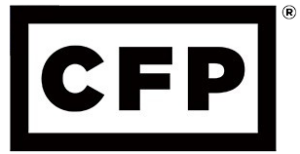President Joe Biden announced a program to provide student debt relief to millions of borrowers of federal loans. That’s if it’s not challenged in court.
The plan would offer up to $10,000 in forgiveness for people who earn less than $125,000 based on your 2020 or 2021 tax return ($250,000 for couples) and up to $20,000 for Pell Grant recipients. I’m excited to say there seems to be a number of Powwow clients positively impacted by this program – congratulations!!!
Biden also extended the pause on repaying federal student loan debt through Dec. 31, 2022. This is apparently the last pause, so to help going forward, he has proposed a cap on income that can be used to calculate how much borrowers repay through income-driven repayment. Since this isn’t set in stone quite yet we’ll save that for another time.
The Elephant in the Room
Many are divided on whether the relief was enough or too much. I think the problem is that in its compromise to do something without giving away the farm – it falls short across the board. What’s the saying… you can’t please everyone? This is just my opinion, but I’m happy to elaborate my thought process which is bias to the extent I’m a financial planner.
The White House estimates that about 20 million of the nation’s roughly 43 million student debt holders will see their entire balance canceled. So to that extent, it’s certainly a material impact given the sheer number of people now in the clear. And from an accounting standpoint, I’d imagine this will go a long way to clean up the books.
But what I keep circling back to as I consider the program… is $10,000 really insurmountable debt? Isn’t $10,000 almost the least of our problems? From my point of view, which is behind the lens of many of my clients, if you have a $10,000 or less balance you’re in the home stretch. So to address the biggest points of criticism… are the right people being helped? Was enough forgiven that it’s actually helping a person see the light at the end of the tunnel?
Yes, but in limited circumstances. One was pointed out by Biden himself, which was his feeling that those who attempted college but didn’t graduate are in the worst circumstances to repay the loan. It’s paying on something that ultimately yielded no value and wasted time. I would emphatically agree and venture to guess pressure from peers, school councilors, and parents were major factors in the decision to give college a go vs the student’s interest and capabilities being seriously considered. Second, I work with many parents who have taken out loans for their children, ie Direct PLUS. $10,000 x 2 or 3 children becomes material relief for that person or couple.
But apart from that… I agree it falls short.
My first issue with this plan is my concern about inflation. $10,000 is not enough money to make a material difference for any one borrower in serious student loan trouble, but a whole lot of money cumulatively for the government to hand out. And even if you feel politically that it’s tax dollars well spent on a deserving demographic, it’s hard to argue that it won’t add gas to inflation.
I’d like to think that $10k given to borrowers might end up in their cash reserve for emergencies or to catch up on retirement savings within a 401(k). But it seems more likely to go toward a new car payment, home down payment, home improvement, groceries, etc – adding that much more money into the economy keeping prices high.
My second larger issue with the program is it does absolutely nothing to address the student loan crisis itself. What about this year’s students, or next? Studies show that the return on investment for a college degree is real depending on major, completion time, and graduation ranking. Above-average students in a number of fields should not have problems repaying their debt. Above-average students are also best positioned to receive merit aid to make the cost of college more palatable to begin with (so long that they grab these opportunities vs insisting on full-priced reach schools).
But below average students pursuing a degree in lower-paying fields are at an obvious full-circle disadvantage. And my issue is this program does nothing to educate these children and families on the realities of student loans and alternatives to 4-yr private college. And I don’t necessarily mean military or trade, but even community college for 2 years or during the summer months with pro-active coordination to transfer to a 4-yr school. This forgiveness program also doesn’t create any accountability to the lenders and schools should students be given these loans but wind up unable to pay.
From an economic standpoint, I understand why student loans are not a part of bankruptcy. It would be an immediate strategy to file at graduation and suffer through 7 years of credit penalty to be back on track by 30 – right? But because student loans are not eligible for bankruptcy, I also feel like it gives license to lenders and institutions to be irresponsible with what they’re allowing to be lent out. From a freedom of choice, inclusion, and diversity standpoint – I understand that there is a fine line here. You don’t want colleges to be only attainable by the top 10% since it may be more financially responsible to provide them a loan. But there should be materially better ways to support socio-economic and diversity efforts that don’t drown a person (and their parents) in debt as a teenager. For example, why am I often the first, if not only person, explaining the hazards of going to a reach school? And that ideally you don’t want to take on more debt than what you could potentially receive your first year out of college. I haven’t had a client tell me yet that they’ve been told that simple nugget from any lending authority or school. I also haven’t had a client have any real concept of what their child may even make at graduation. It’s a simple search on Glassdoor or Indeed to get a sense. And to not belabor the point, but this lack of lending responsibility is all evidenced by the fact that despite about half of loans being wiped out by Biden’s program, it cuts less than 20% of America’s $1.75 trillion student debt tab. To spell it out – the borrowers who aren’t totally forgiven have a whole lot more debt than $10k. If the average right now is $30k per borrower, imagine what it jumps to once the $10k or less balances are wiped out.
Check if your debt can be forgiven
Paperwork is required to have this debt forgiven unless your information is on file with a recent FAFSA application. As of October 2022, the application to file can be found here: https://studentaid.gov/debt-relief/application
For more information on the program and potential income-driven repayment changes, read here: https://studentaid.gov/debt-relief-announcement/





This Post Has 2 Comments
Thanks for this info, Q! In looking back at my financial aid paperwork, I found a response from the university I attended to a letter I sent them asking for more aid. The letter stated that perhaps I should think about attending a more affordable program and that taking out more debt wasn’t a good idea (I’m paraphrasing). It wasn’t a form letter; it was written directly in response to my personal request. I read that letter much differently as an adult nearing 40 than I did as a teenager. Clearly, they were trying to help me (and my parents) avoid crippling loan debt, but I wasn’t having it at that age. You just don’t think it’ll happen to you. I’m actually quite surprised my university sent me a letter like that; perhaps more education could happen from the universities themselves, along with financial aid coaching if students decide to attend and want to be on a track towards smart repayment.
Pingback: The Latest on Student Loan Forgiveness and Repayment - North Andover Financial Planner | Powwow, LLC